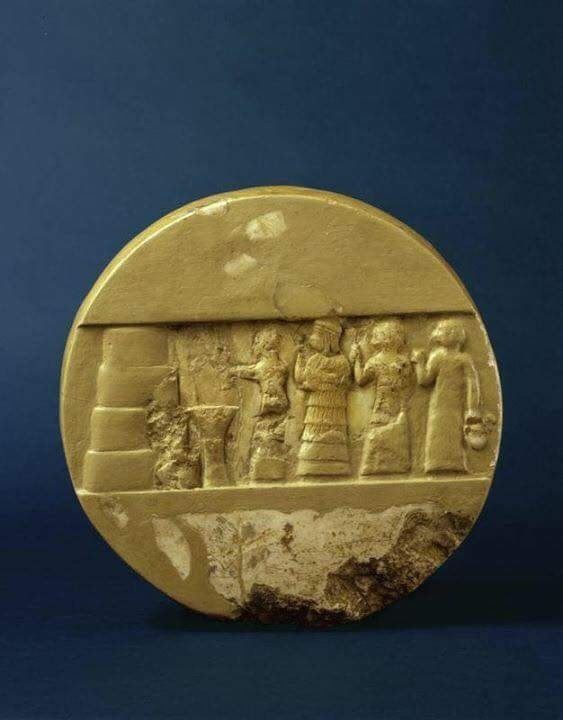Tablet of Enheduanna, daughter of King Sargon of Akkad

The tablet of Enheduanna, daughter of King Sargon of Akkad, the first known poet in history, and the high priestess of the temple of the moon god in Ur, 23rd century BC.
Enheduanna (2285-2250 BC)
Her name is Enheduanna or En-Hedu-Ana, and (It means the high priest or priestess, and Hedo means adornment or garment, and its meaning is adornment of the high priest of the god An, and it is a name that refers to the god Nanna (Sin), the god of the moon).
She is an Akkadian princess (daughter of King Sargon of Akkad, and her mother is a high-ranking priestess of the moon god Nanna (Sin))
The high priestess of the Sumerian moon god Nanna in the city of Ur (the oldest known figure to hold this title), a position of important political privilege that was usually held by the daughters of kings.
Enheduanna is the aunt of the Akkadian king Naram-Sin and is one of the oldest women known by name.
Literary and historical scholars consider her the oldest woman writer and poet of love and sex. Enheduanna reached the highest priestly rank in the third millennium BC. She was appointed by her father, King Sargon of Akkad, and she had a prominent role during the rule of her father and mother, Queen Tashlultum.
She left a group of literary works that include poems dedicated to the goddess Inanna and a group of hymns known as “Sumerian temple hymns.” They are considered the first attempts at systematic divinity, and some scholars, such as William Hallow and Van Dyck, attribute certain works to her, although they were not explicitly mentioned by name. Sargon appointed Enheduanna assumed the position of High Priestess in a move that caused a great uproar to secure his power in southern Sumeria, where the city of Ur was located. Then she continued in her position also during the reign of her brother Rimush, and during this particular era some Sumerian regions witnessed rebellions against the rule of her brother Rimush. She was involved in some political turmoil and was expelled from her position, but she returned to it during the rule of her nephew Naram-Sin. Its author describes “the expulsion of Inanna” was deported from Ur and then reinstalled (Franke 1995: 835). It is linked to the “Curse of Akkad,” where Enlil cursed Naram-Sin and expelled him. She played a role in convincing southern Sumer to restore Akkadian rule over them. She died shortly after that, but Her memory remains as an important figure, and it is possible that she deserved the status of a semi-god. Her mother was a Sumerian from southern Iraq, and she may also have been a priestess. It is said that Sargon I wrote the following words on one of the clay tablets, explaining the story of his birth: My priestess mother carried me as a fetus, gave birth to me in secret, placed me on an ark of papyrus, and sealed the door. The river carried me to a farmer named Akki, who raised me as his own son. ..While I was working in the gardens, Ishtar saw me and loved me. For fifty-four years the kingdom was mine.
Source: websites

